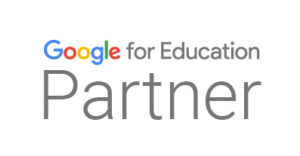Just weeks ago, schools across India were forced to shut down temporarily due to an aggressive heatwave sweeping through major cities. This is a pattern we’ve seen unfold year after year, leaving thousands of students in disrupted education every summer. As climate extremes grow more frequent and severe, the question isn’t whether schools will be affected. It is about how often and how deeply it’s going to be?
The real challenge now is building an education system that doesn’t grind to a halt with every environmental disruption. We need a model that’s flexible, inclusive, resilient and hybrid and blended learning offers exactly that. But what does hybrid and blended learning actually mean in this context?
So, let’s explore why it’s rapidly evolving into a necessity rather than just a passing trend.
Understanding Hybrid Learning
Hybrid learning is a mix of the best aspects of both worlds. This includes combining in-person classroom experiences with online instruction. Unlike purely online learning, hybrid learning is designed to offer flexibility without sacrificing face-to-face connection. And unlike traditional schooling, it keeps education moving forward, even when classrooms must close.
Understanding Blended Learning
Blended learning combines traditional face-to-face instruction with online learning, creating a flexible and personalized educational experience. It allows students to engage with content at their own pace while still benefiting from in-person support and collaboration. This hybrid approach enhances learning outcomes by integrating the strengths of both physical and digital classrooms.
Why Schools Are Switching to Hybrid Learning
Here’s what the facts tell us –
- Schools that adopted hybrid learning during COVID-19 continued with it afterward because of its adaptability and resilience.
- Studies have shown that hybrid learning improves retention rates when compared to traditional methods.
- Schools implementing hybrid models reported higher student engagement, particularly in secondary and senior grades.
So why aren’t more schools embracing hybrid education fully? The urgency is real. With schools in metro cities closing multiple times in recent weeks due to heat alerts, students are losing valuable academic hours. Teachers are struggling to reschedule exams, assignments, and projects. Parents are anxious about learning gaps widening further. Also, it’s time to ask ourselves questions such as how long can we afford to let infrastructure challenges dictate the quality of education?
What’s the Difference?
Unlike fully online learning, which can feel isolated and lacks classroom dynamics, hybrid learning and blended learning keeps the human touch alive. It allows teachers to conduct live lessons, host discussions, and assign digital projects. At the same time, it accommodates days when students can’t attend school physically.
Key Distinction of Hybrid vs. Blended Learning
While often used interchangeably, hybrid and blended learning aren’t totally the same. Blended learning is a teaching strategy that means using online tools within the classroom. Hybrid learning, on the other hand, is a structural shift. It’s not just about using technology. It’s about redesigning school systems to be future-ready, resilient, and inclusive.
Benefits of Hybrid Learning for Schools, Teachers & Students
- Continuity Despite Climate –
Whether it’s a heatwave, pollution emergency, or local flooding, hybrid models ensure that learning never stops.
- More Inclusive Learning –
Students with health conditions, learning disabilities, or travel constraints benefit from the flexibility to learn at their own pace and location.
- Empowered Teachers –
Teachers can plan better with digital tools, monitor student progress in real time, and personalize support.
- Greater Parental Involvement –
With learning accessible from home, parents can stay informed and engaged in their child’s progress.
Challenges to Address
Of course, challenges exist such as unequal device access, lack of teacher training, and occasional technical issues. But these are solvable. The bigger challenge is waiting too long to adapt. By proactively addressing these barriers today, schools can build a more resilient education system for tomorrow.
Hybrid Learning Is No Longer Optional
Heatwaves may be seasonal, but their impact on learning is long-lasting. Schools must act now and not just react when classrooms shut down. Hybrid education offers the structure and support schools need to stay open, even when buildings are closed.
We must now confront some critical questions like – Can we afford more learning loss? Are we preparing students for an unpredictable world? What if the next disruption lasts weeks? The future of education isn’t fully online. It isn’t fully offline. It’s hybrid and it’s happening now.




 1st Floor, H-31, Sector 63,
1st Floor, H-31, Sector 63,